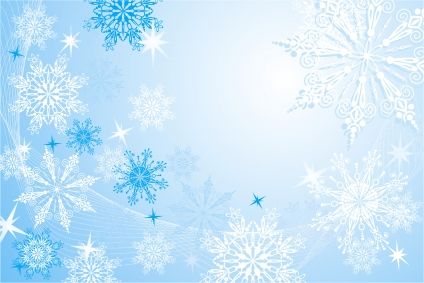Snowflakes on Christmas Cards Drawn Wrong

In pop culture depictions, snowflakes are usually drawn inaccurately, an expert now says. Snowflakes are six-cornered, rather than the four-, five- and eight-cornered crystals typically depicted in children's books, Christmas cards and even in an ad for a science magazine.
Thomas Koop of Bielefeld University in Germany noticed the frosty mistake on a subscription advertisement for the scientific journal Nature that contained octagonal snow crystals in the background.
"Ironically it was entitled '…for anyone who loves science,'" Koop said. Bringing the irony full circle, Koop's commentary on the subject is published in the Dec. 24 issue of Nature.
Snowflakes are made of water molecules that link up via hydrogen bonds. The best and most efficient way to arrange themselves is a hexagonal crystal lattice, Koop explained. So rather than eight sides, snowflakes are bound by physical laws to take on a six-sided shape.
"The resulting hexagonal crystal lattice is the lowest energy form of water at cold ambient conditions," Koop told LiveScience. "As the molecular building blocks arrange themselves into a hexagonal structure on the molecular scale, so do snow crystals exhibit this hexagonal symmetry also on the macroscopic scale."
Even so, such sides can vary, and indeed as pop culture accurately depicts the fact, no two snowflakes are alike, at least among larger flakes.
"The detailed growth of snow crystals depends on the ambient humidity and temperature, both of which vary considerably in the atmosphere," Koop said. "Since each crystal experiences a different pattern of humidity and temperature as it falls to the ground, no two crystals look alike."
Sign up for the Live Science daily newsletter now
Get the world’s most fascinating discoveries delivered straight to your inbox.
Past research, however, suggests that at least for the smaller ice crystals that fall before they fully develop, the adage may not hold true.
Another of the elements the media gets wrong: the shape of raindrops. Rather than the teardrop shape typically illustrated, raindrops should be more spherical, Koop said.
"The shape of falling rain drops is depicted incorrectly in almost any (children's) book that I know of," Koop said. "Most often, they are drawn in a teardrop-like shape, a kind of pinnacle at the top and round at the bottom."
He added, "However, in reality cloud droplets are spherical because of water's surface tension and falling rain drops are somewhat flattened at the bottom (depending on their fall speed), because of the resistance they feel as they fall through the air (similar to the drag that you feel in your face when you bike)."
- Images: Amazing Snowflakes
- White Christmas: The Coldest Places in the Solar System
- The World's Weirdest Weather
Jeanna Bryner is managing editor of Scientific American. Previously she was editor in chief of Live Science and, prior to that, an editor at Scholastic's Science World magazine. Bryner has an English degree from Salisbury University, a master's degree in biogeochemistry and environmental sciences from the University of Maryland and a graduate science journalism degree from New York University. She has worked as a biologist in Florida, where she monitored wetlands and did field surveys for endangered species, including the gorgeous Florida Scrub Jay. She also received an ocean sciences journalism fellowship from the Woods Hole Oceanographic Institution. She is a firm believer that science is for everyone and that just about everything can be viewed through the lens of science.











